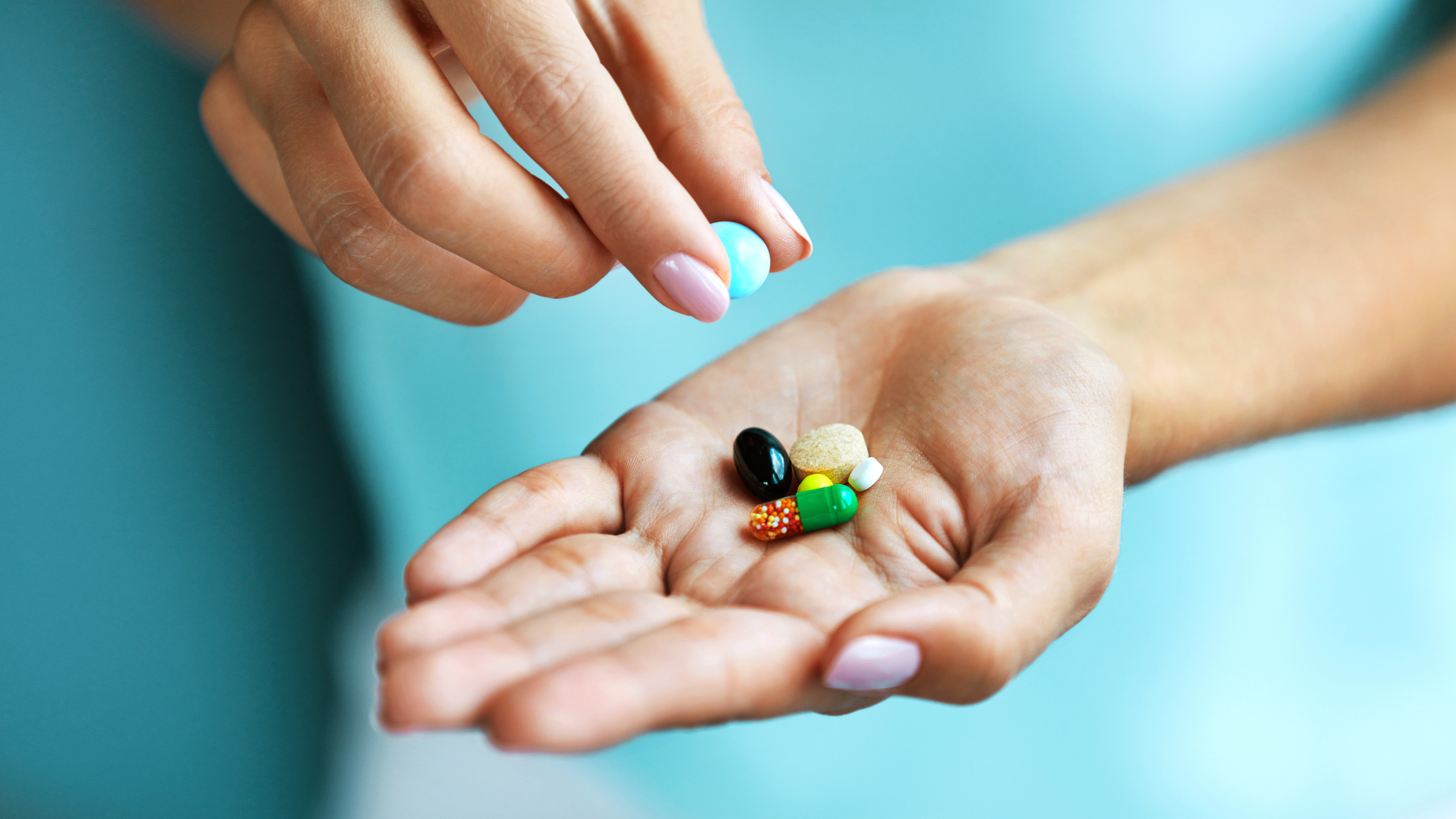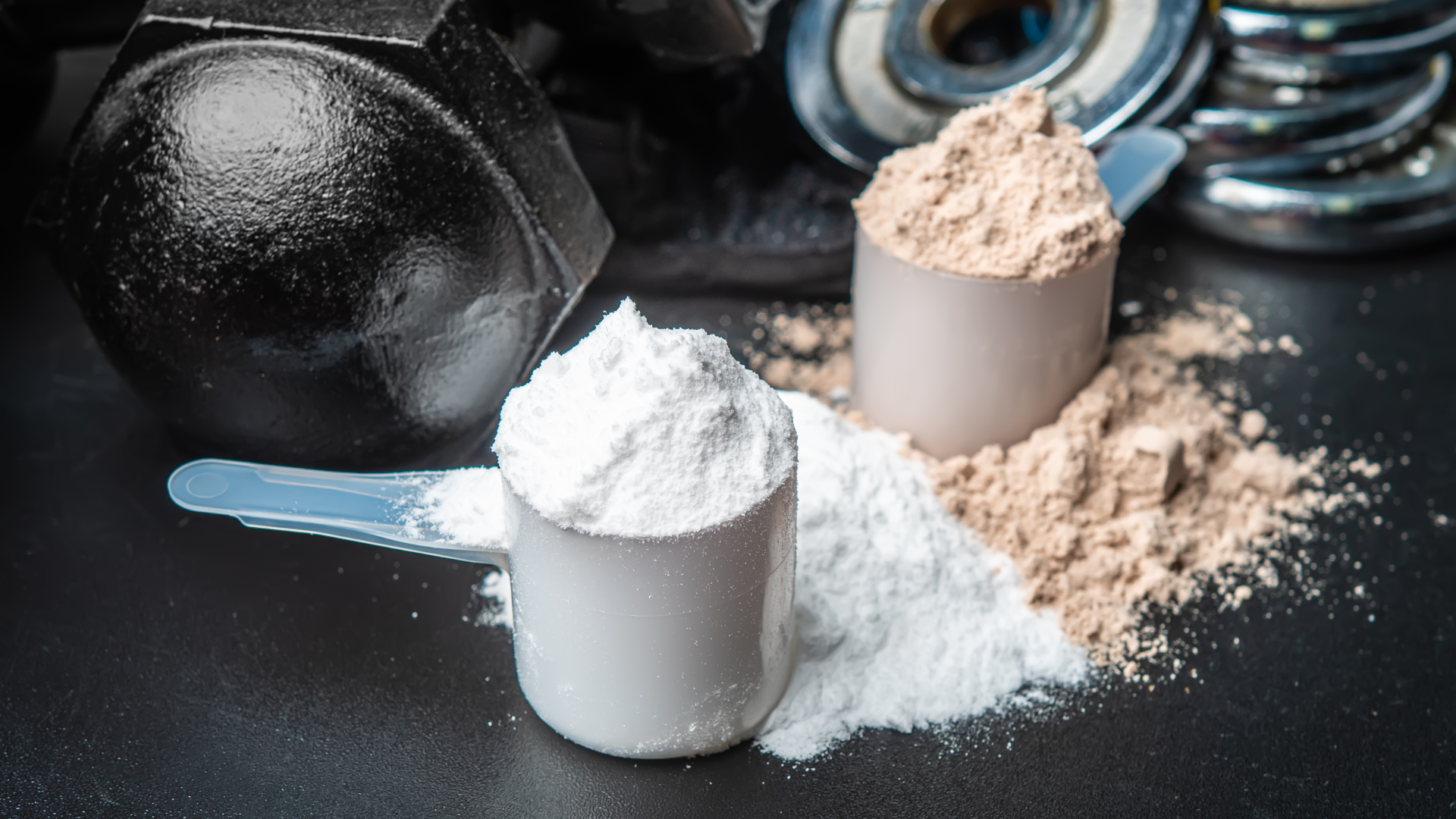Along with lifting heavy weights and increasing your protein intake, one of the most common tips for building muscle is supplementing your diet with creatine.
And rightly so.
Creatine can be a phenomenal way to boost muscle growth—you just have to use it correctly.
If you’re thinking about using it or dipping your toes in the water but aren’t noticing results, knowing the most common creatine powder mistakes will help you reach your health and fitness goals.
To steer you in the right direction, we’re going to look at five common creatine powder mistakes and how you can avoid them.
Ready?
Let’s go.
What is creatine?
Before we get into the mistakes and setbacks, let’s consider the question, ‘What is creatine?’ for a moment.
To be specific, creatine is an amino acid that is converted into creatine phosphate by your muscles. This, in turn, becomes adenosine triphosphate (ATP), which can enhance your performance in the gym.
ATP is depleted very quickly when you work out, so being able to create more at a rapid pace through creatine supplementation will boost your performance in a big way.
What are the benefits of creatine?
While protein powders give your body the extra protein you need for muscle growth, creatine provides extra energy while fuelling your body throughout your workouts.

As a result, taking creatine can help you build muscle by boosting your strength and intensifying your gym sessions. It also keeps your muscles hydrated, so you’ll be able to:
- Workout more explosively
- Preserve your muscle mass
- Enhance your recovery periods between workouts
Related: Creatine vs. whey protein, which is better?
5 Creatine mistakes that might be stunting your progress
There are an insane amount of scientific studies that show just how effective creatine is at building muscle. So, why might you not be experiencing the results you deserve when taking the supplement?
It’s probably because you’re making one of these common creatine mistakes.
1. You’re not drinking enough water
Creatine hydrates your muscles by providing them with water. To keep this up, your body needs a surplus of water to continue fuelling those muscles during workouts.

Make sure that you not only mix your creatine powder with a large amount of water (we recommend around 300-500ml for a 5g serving) but that you also drink enough to replenish your body throughout the day—aim for around three or four litres.
2. You’re combining creatine with too much caffeine
Drinking enough water for optimal creatine absorption can be counteracted if you consume too much caffeine.
Caffeine is a natural diuretic that can lead to dehydration. When your body takes in caffeine, it signals to your pituitary gland to inhibit the secretion of vasopressin (also known as antidiuretic hormone or ADH). As production of ADH slows, the kidneys absorb less water; as a result, more is expelled through urination.
The caffeine present in your average cup of coffee shouldn’t dehydrate you, as the water content will mostly counteract this effect. But, taking caffeine in other ways (caffeine supplements, for example) may interfere with how well creatine can do its job.
3. You’re not cycling off of creatine
There’s actually still some debate about whether or not you need to cycle creatine, but if you’ve been supplementing for a while and you’re struggling to add mass, then it could be worth taking a break.
It may sound counterintuitive, but unlike other supplements, creatine can have less of an effect on some people if they take it for a prolonged period of time (more than eight weeks or so).
The creatine cycle explained
A traditional creatine cycle involves a one-week loading phase, during which you take higher doses (usually 20g a day, in either four 5g doses or two 10g doses) to saturate your muscles over a short period effectively.
Next comes the maintenance phase. This part of the process can last anywhere from three to seven weeks. At this point, you’ll typically stick to one 5g dose per day (30 minutes before your workout is ideal) to maintain your boosted stores of creatine.
Taking a break from creatine
Usually, you might consider a week or two off toward the end of the maintenance phase. Having taken it for several weeks, creatine will still remain in your system during a break while offering greater benefits when you start your next cycle.
FYI: Everyone responds slightly differently. So, you might need to experiment with these short creatine interludes after taking it daily for a couple of months without a reset period. Doing so will allow you to understand which strategy works best for you and your goals.
4. You’re not taking the right amount of creatine
Like all supplements, there’s a creatine sweet spot that leads to optimal performance and the best possible results.
Too little or too much can have a negative impact. Take too little, and you won’t enjoy the benefits that creatine can offer. Take too much and you could experience bloating of your stomach and your muscles or suffer from gastrointestinal distress.

Your body naturally produces a gram or two of creatine a day. It’s also obtained in small amounts through foods including tuna, chicken, beef, and pork (unfortunately, there are no dietary sources of creatine that fit into a vegan diet).
Eating the right foods is a good start, but taking a creatine supplement can be the difference between gaining muscle mass and getting stuck in a plateau for weeks on end.
As mentioned, supplementing with 20-25g per day during the loading phase (if you do go down this route) will rapidly build up the creatine stores in your muscles. Otherwise, a daily dose of 3-5g is all you need to maintain your creatine levels or build them up at a steady rate if you don’t opt to load up quickly early on.
5. You’re not putting enough effort into your workouts
Creatine can feel like a big step up in your routine when you first try it, which should hopefully inspire you to really push on in the gym.
But it’s not uncommon to think that because you are now taking this fantastic new muscle-building supplement it will do all of the work for you. Unfortunately, this isn’t the case.
You need to make sure that your workouts match the intensity that creatine can offer—you won’t see any results from just downing 5g of creatine each day and sitting around waiting for something to happen.
Creatine provides your muscles with what they need to grow, but you still have to do the business in the gym to make things happen.
You should view creatine as an ally that works hand-in-hand with your gym sessions, not like Popeye’s cans of spinach that can instantly provide extra muscle mass.
Related: Exercises that help build muscle
How to use creatine to build muscle
Creatine is clearly great for muscle building, but it’s not a magic potion. You have to use it properly and put the work in with the weights so it can do what it does best: supercharge your workouts, boost your energy levels, and enhance performance.
All good creatine products will provide the information you need to get the best results. So:
- Follow the suggested dosages
- Drink plenty of water
- Lift like a legend at the gym
That’s the way to gain muscle mass with creatine.
If you want a proven creatine supplement that has helped thousands of people build muscle in the gym, give Crazy Nutrition’s Ultimate CRN-5 a go.
It contains a top blend of creatine monohydrate and other quality forms of creatine that will have you pushing out those crucial extra reps. Plus, it contains added electrolytes for even more muscle hydration.
Try CRN-5 to take your workouts to the next level and get those gains that you’ve been missing out on for so long.



